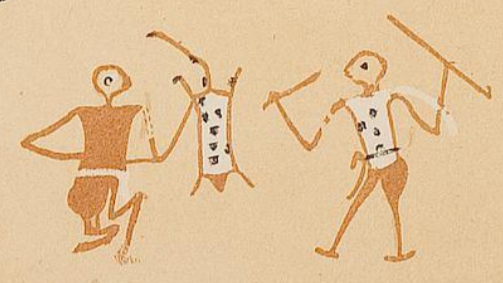
The cemetery called HK43 at Hierakonpolis belonged to the non-elite (or workers) segment of the predynastic population. HK43 holds over 500 individuals of Naqada IIB-IIC date (roughly 3650-3500 BC).
In the southwestern part of the cemetery, burials with large amounts of leather were discovered at HK43. In most cases, the burial had been badly disturbed, and it was unclear whether the body had been placed in a leather sack or simply covered with rawhide cow skin. Only in Burial 213 was the leather skin found intact, carefully laid over the entire body of a young child.
Burial 213 was an intact grave of a small child (3–5 years of age), who had been laid upon a small oval mat and covered with a rawhide leather blanket that had been carefully placed over the entire body with the edges tucked in all around. On top of this, another mat was laid to provide further protection. What makes Burial 213 exceptional is that directly beneath it was another burial (B219) of an adult, who had been originally buried on a large round mat, but whose bones had been completely removed in order to inter the child. Only one articulated foot of the adult was left undisturbed. This is the first clear evidence for the reuse of burial space at HK43. It looks as if the child has been placed in the lap, over the abdomen and thighs and between the arms and legs, of the earlier occupant. There is no obvious spatial reason for this practice, as there was plenty of open space for graves in this part of the cemetery. The child seems to have suffered from a variety of maladies with X-ray analysis.
By taking the grave goods of the surrounding tombs into consideration, a Naqada IIB date is highly plausible for Burial 213.
 |
| Wall painting from Tomb 100 at Hierakonpolis, ca. 3500-3200 BC |
References:
http://www.hierakonpolis-online.org/nekhennews/nn-14-2002.pdfMay 20, 2025 Takahiko Nakagawa